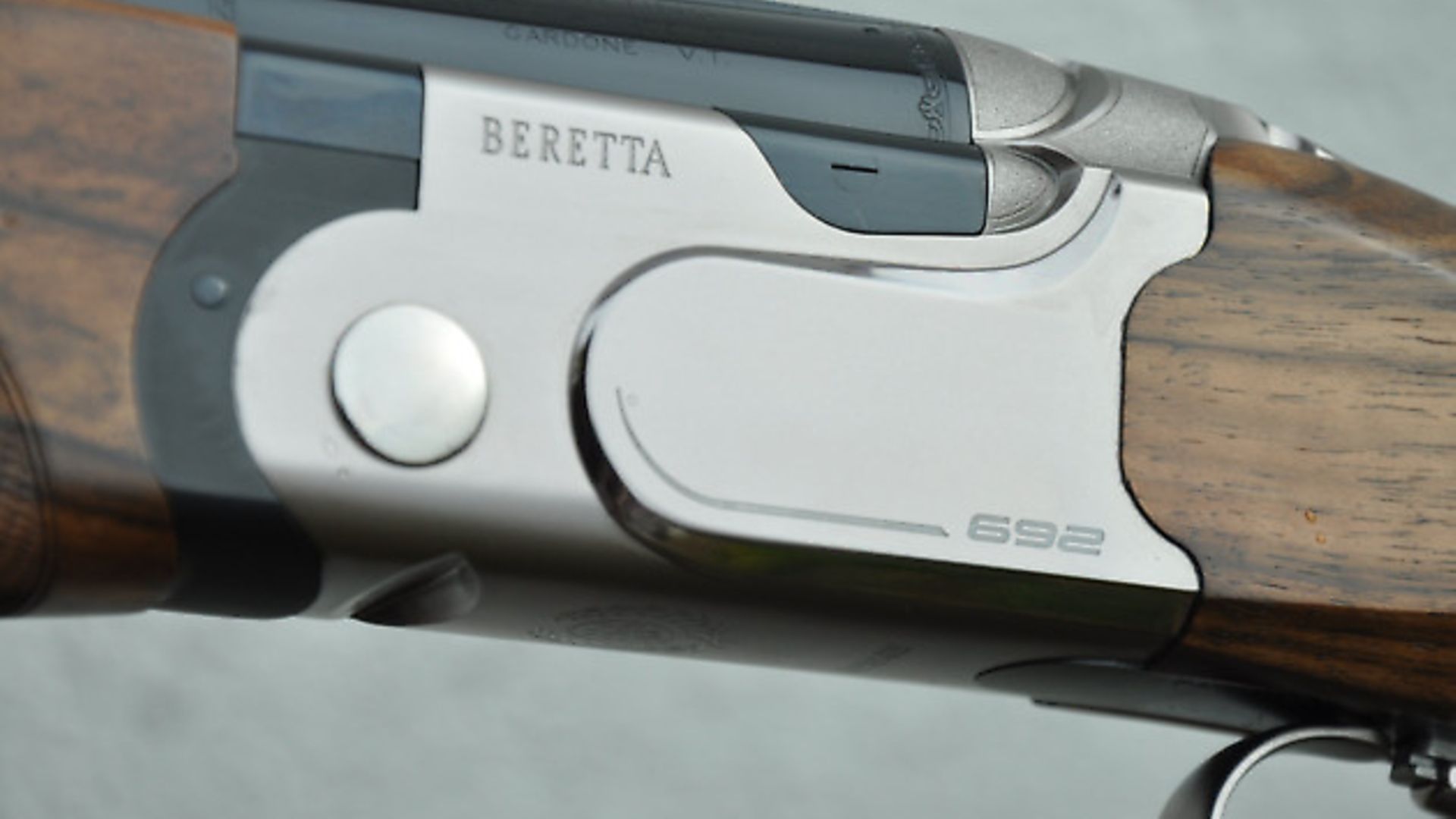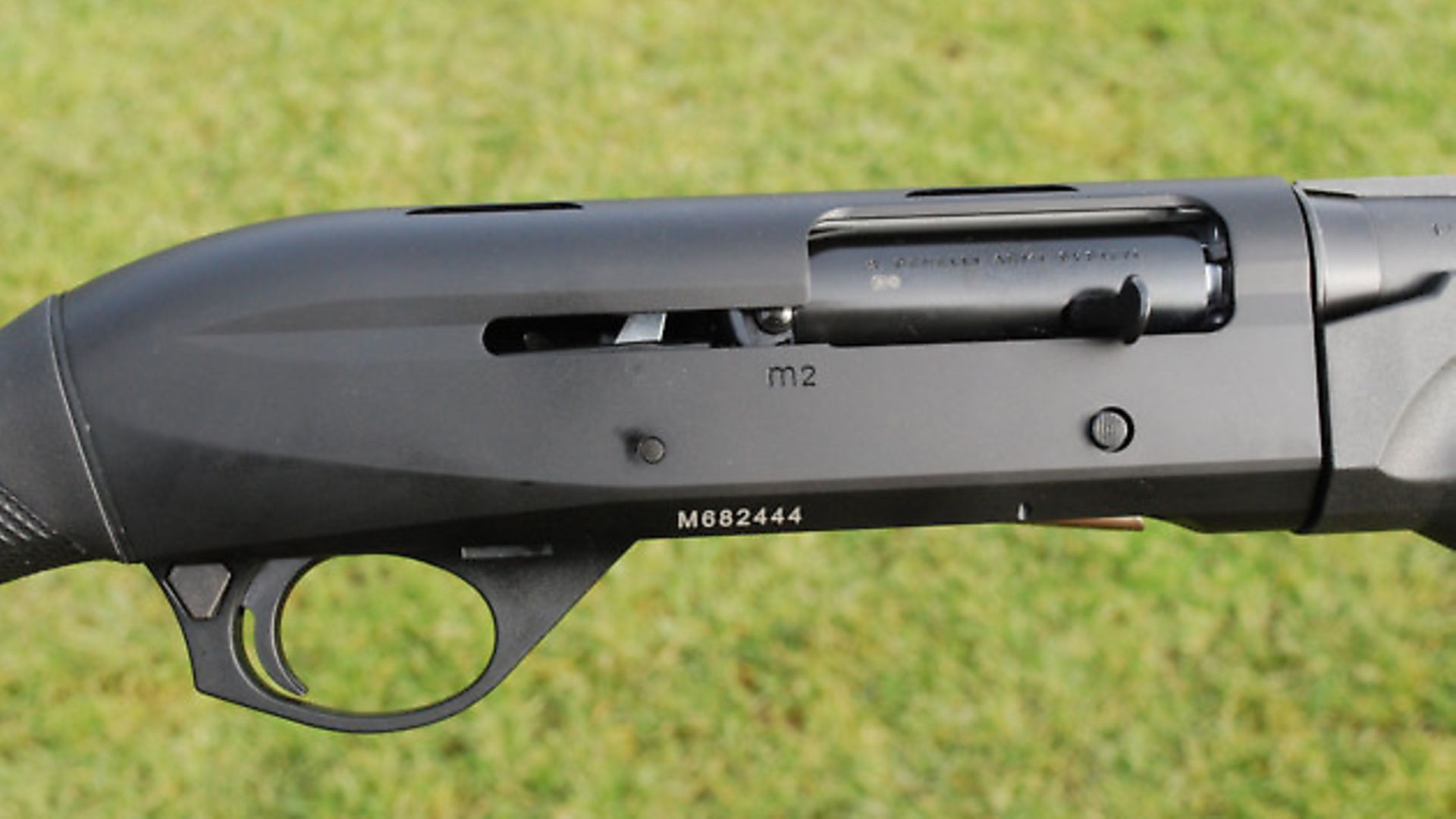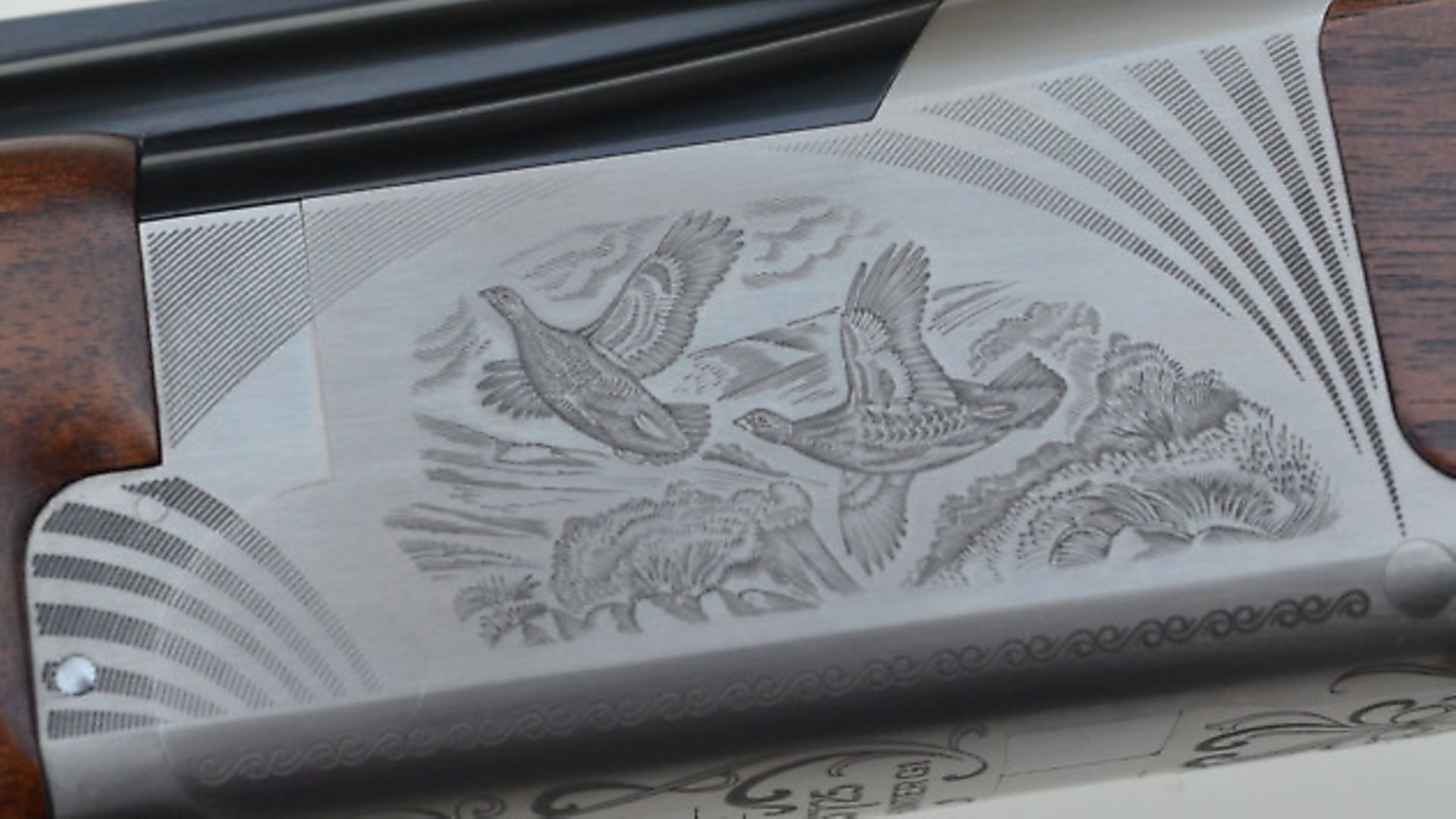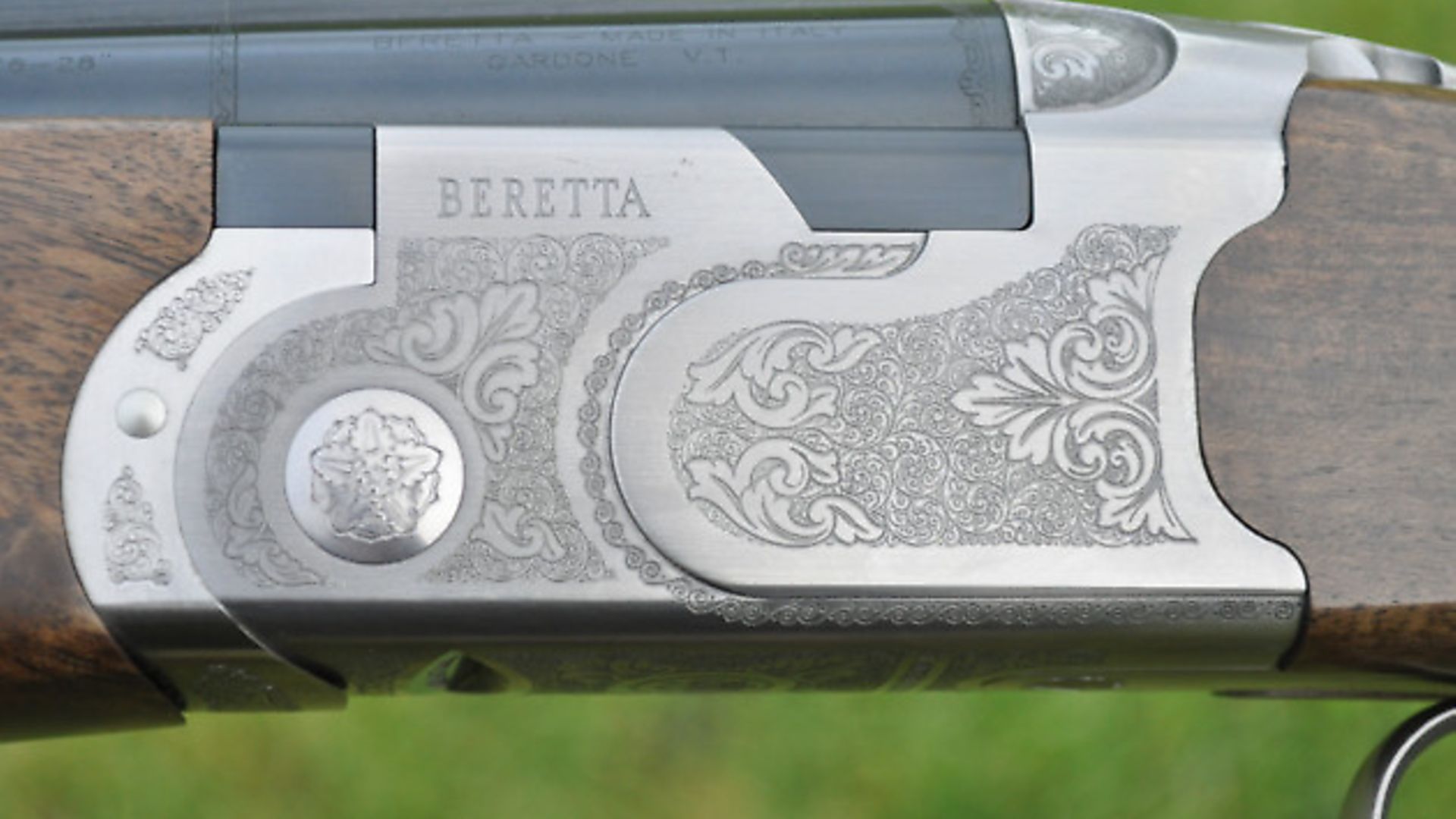Beware the man with one gun, they say… but how do you make sure it’s the right gun?
 credit: Archant
credit: Archant
Many readers may now or one day soon be in the market for an ‘all-round’ gun – a gun that might be used for pigeons, clay pigeons, game shooting or even on the foreshore. The good news is that there have never been better guns on the market than now, and, happily, one does not need to spend a fortune to get something truly excellent. Before considering brands, though, let’s consider specification a bit, and let me start by noting some of my own prejudices (albeit ones based on a wealth of experience). Having progressed from single barrels and bolt-action small-bores, I started serious shooting with a side-by-side. I used it for everything. Happy days. (And, they were, even though one tended to buy cartridges in packets of 10 – a box of 25 Grand Prix was a luxury!)
Today, I would advise most people to go for an over-and-under first, probably a multi-choked one to increase versatility (though we might note in passing that if your funds are very limited there are some fantastic side-by-side bargains around at the moment – non-ejectors are practically given away now). Don’t be too bothered by designations like ‘field’ or ‘sporter’ when considering your ideal do-it-all gun. Consider the handling above all else. If the gun you like was designed primarily for clays and comes with extended multi-chokes, two or three flush-fitting ones won’t cost a king’s ransom. If you never intend to set foot on a driven game shoot, semi-automatics are worth serious consideration. Gas-operated guns are light on the shoulder, and repeaters generally tend to be light on the pocket.
Let’s progress to some other basic questions. Why do I suggest getting an o/u or gas-operated semi? Frankly, I think they are easier to shoot, with their single sighting plane and lower recoil (which does not mean you cannot do the business with a side-by-side, of course you can and many still do). How long should the barrels be on an all-round gun? 30” is the right ‘do anything’ over -and-under length for most people in my opinion (with exceptions), 28” remains the best all-round choice for a side-by-side. If your intent is mainly to walk up, and you don’t want to go far beyond a Skeet field as far as clays are concerned, a 28” over-and-under may be just the ticket (and 28” guns don’t carry the slight premium 30” ones tend to on the secondhand market). 28” tend to have less frontal weight and that can be useful to some people (notably, many women).
If you like larger, longer guns even 32” can be used for everything (I used 32” guns habitually for game and clays). I don’t think an all-round gun should be too heavy, however; seven to eight pounds is the right sort of weight range. The rib is a matter of personal choice – they all work. As for the stock, my preference would be a semi-pistol or fairly open radius pistol. I would not want much of a palm swell on a gun that might go in the field on occasion, nor would I want a stock which was too club-like. Many Italian guns still seem to have ‘Trap-ish’ stocks – with woodwork excessively influenced by the national Trap shooting experience. This should not necessarily put you off – it is relatively easy to get a stockmaker to slim and put a bit of a taper in an over thick comb, remove a palm swell, re-radius a grip, or, indeed, slim a fore-end, or raise a stock – but it should be factored in and will increase cost (that said it is often worth doing).
 credit: Archant
credit: Archant
If you are going to use a gun on game and clays, avoid a stock which is too low (my simple test is to mount the proven empty gun at 45 degrees with normal cheek pressure and eyes shut. If I can’t see the bead, the comb is too low).
Game gun or Sporter?
‘Field’ model or ‘sporter’? Manufacturers tend to add these designations but they don’t always mean what they seem – the terms should not be considered absolute. Usually the field gun has a thinner rib, possibly a lower stock, and slightly less all-up and barrel weight (the barrel weight often being related to the rib type). My inclination is towards sporters for all-round use. I generally prefer the steadier way they handle – they tend to be more stable, a little heavier, but they also typically recoil less. Too often I have watched people punishing themselves using lightweight game guns for clays (or, indeed, game). And, I might add at this point that an all-round o/u should not be an extra-light model with an alloy action.
Browning or Beretta?
 credit: Archant
credit: Archant
Let’s jump now to the issue of marques because in both the case of Beretta and Browning it is the 30” basic Sporter (the Silver Pigeon 1 and Browning 525) that I would recommend as excellent all-round guns. They come in at very sensible prices, last well, and offer outstanding ‘bang for the buck’. The barrels on the Sporters are a little heavier, as discussed, and have wider ribs (10mm instead of 6mm in both cases). The Beretta boasts a lower action profile, Opti-bored barrels with longer forcing cones and longer Opti-chokes. The latest Browning 525 is ‘Invector Plus’, meaning it is back-bored and has longer chokes, too. It benefits from a full width hinge pin and traditional B25-style bolting. They are both first rate guns and selecting which one is right for you is just a matter of personal choice. I do find the Browning grip shape sometimes suits those with larger hands though.
Cost? The Silver Pigeon Sporter has an RRP of £1,700; the slightly lighter (3.3kg, compared to 3.5kg) Field gun saves you £100. Both are Opti-bore. If you want to spend a few more pennies for better wood and engraving, the Silver Pigeon Deluxe in field or sporting versions have RRPs around £2,200. There is also the Silver Pigeon Classic, if you can find one (it was a limited edition) at £2,975. The Browning 525 Grade 1 Hunter and Sporter have the same RRP at a very competitive £1,400 (no doubt about it, simply brilliant value). They both come with four chokes in an ABS case (as is common with most of the guns discussed). The only real difference is a 6mm or 10mm rib, save that the Sporter has an adjustable trigger and vented side ribs. The latest 525 Sporters also have lightened barrels giving them a near ideal handling in my book (the older Sporters were not quite as lively and therefore, arguably, less suited to field work).
Okay. What else do we have? Well, in the GMK line, there is the 686E Evo Sporter, another Opti-bored gun. Technically a clay model, with barrels ranging from 28 to 32” it might also meet our criteria and has an RRP of £2,050. The top notch 692 Sporter is another designated clay gun – and one I especially like. It has a very plain, inoffensively embellished action (though silver finished, it could not be considered gaudy in any sense). Barrels again are 28 - 32”, chokes are Optima HP and the barrel bore is semi-tapered and ballistically is especially efficient. The RRP of £3,200 is not unreasonable. The gun is also interesting for having adjustable balance via weights in the stock and a new barrel profile (an adjustable stock version is available too).
Beretta still offer the SV10 chassis guns – the Perennia and Prevail. They were meant, one suspects, to gradually replace the 600 series but this never really happened, possibly because of their quite radical aesthetics. They have enlarged barrel shoulders but are generally similar to Silver Pigeons in basic concept, but can withstand higher pressures because of re-engineering. They shoot well. There is the Perennia 1 Field gun, 28 or 30”, with an RRP of £1,800 and the Prevail Sporter, which is 30” only and has an RRP of £1,900. In this case, earlier comments not withstanding, I especially like the 30” ‘Field’ Perennia. I am not, however, especially fond of the kick-off recoil reducing device offered on some of these SV10s (the one in the grip on
some 400s is another matter). I find it bounces at the shoulder.
 credit: Archant
credit: Archant
Franchi, now part of the Beretta empire, and also based in Northern Italy, now offer a universal model (game or clays) in 12 or 20, 28 or 30”, with a little bit of restrained game scene engraving and five flush-fit multi-chokes. The RRP is a reasonable £865. Sadly GMK no longer offer the Spanish made Lanber – once one of the country’s favourite mid-range all-rounders. The factory has now closed, although you will find them on secondhand shelves (my preference would still be for a good secondhand Beretta or Browning because I think they handle better and have better trigger pulls).
What about a semi?
On the semi-auto front from GMK there is the inertia-operated Benelli Raffaello Black, 28” and 30”, weight only 3kg and RRP £1,650. It has a wood stock and looks nice. Five chokes are supplied, and it comes with removable sling studs and a clean looking black action. The Benelli M2 synthetic comes with 24, 26 and 28” barrels (though I would not consider the first two options for all-round use), five chokes and weighs from 3.2kg. RRP is £1,450. The Montefeltro has 26” or 28” tubes, five chokes and an RRP of £1,450. The Benelli M2 Essential is 28” barrelled only – RRP £1,125 with three chokes. The gas-operated 391s have now gone (replaced by the 400 series models which have a rotary bolt), but are well worth considering secondhand. They’re nearly all excellent guns).
My vote with regard to new Beretta semi-autos would probably go for the 303-like, Outlander. A gas gun too, it’s 26, 28 or 30” barreled and hits the scales from 3.25kg. It comes only with one half choke but with an RRP of £960 and with extra mobil chokes costing only £27.50, it’s still a bargain by today’s standards. Budget gun though it may be, you won’t be disappointed when you shoot it. Much the same may be said of the Browning Maxus from £1,185 - £1,487 and Winchester SX3s from £786 -£1,096. Both I think are underrated and excellent in 28 or 30” form. The basic synthetic stocked SX3 is a particularly good buy and would be my choice over some of the bargain basement semis.
Continuing our quest for the ideal all-round gun, we might go back to look at some of the front runners out of the Browning, Winchester and Miroku stable. I really like the new 725s (a gun inspired by the B25, retaining a full width hinge pin and similar bolting, but with a lower action profile, modernised styling, and a very clever sealed DS – Direct Seal – multi-chokes incorporating a copper compression ring at their base). I especially like the sporters in both 12 and 20-bore (my preference is for the 30” 12 and 32” 20). The Grade 1 guns come in at just under £2K. The Grade 5 725 looks really good with heavy scroll and game scenes and costs £3,999, which is not unreasonable for the superior degree of finish and upgraded wood. There is also a smart limited edition black action gun with plain-ish action but upgraded wood.
Miroku
Miroku still have some very well-priced guns; both the MK 60 and MK 70 are worthy of serious consideration for general use. The former has an 8mm rib and fixed chokes (improved and three-quarters), the latter with a 10mm rib and five multi-chokes. The RRP for the MK 60 is £1,395 in Grade 1 form with the very ritzy-looking Grade 5 still coming in at only £2,600 (and the quality is not skin deep). The MK 70 has a 10mm sporter rib and five chokes. It starts at £1,437 in Grade 1 form and £2,765 for the Grade 5. Another exceptional Miroku gun, and one of the best buys on the British market, is the MK38 available with both 30 and 32” barrels. This is a clay gun which is used by many top game shots too – especially for high bird work. The MK38 has a 10mm rib, Invector Plus boring and chokes (the bore diameter is 18.8mm) and comes with Teague chokes in Grade 1 form for a bargain basement £1,580. The refined and elegant, beautifully scroll-engraved Grade 5 is still only £2,740 with much upgraded wood. The fine scroll-engraved Grade 3 sits between the two at £2,250 and would be my choice. It is another top buy, you won’t get more for less. It won’t disgrace itself or you in any company and might still be used to win a major clay championship (as indeed, might the plainer Grade 1), as well as looking right on a posh driven day.
Guerini
I use Maxum 32” 20-bore Sporters for my game shooting, inshore wildfowling, and the occasional round of fun clays (the only sort I tend to shoot now). The gun is not mechanically radical, but looks great with deep scroll-engraved side-plates. The latest models have a first class taper rib added to what was an already good specification including a well proportioned semi-pistol grip stock I had a part in specifying. To quote Mike Mansfield of Anglo-Italian Arms: “If you take a Maxum sporter and buy two or three flush-fitting chokes it never looks out of place anywhere.” I can’t argue and boy, do they shoot well. The gun has an RRP of £3,300, extra flush fit chokes are £65. Guerini also have their non-sideplated but pretty Tempio range in 12 and 20 beginning under £2K and, going up a notch or two, there is the Elipse Evo sporting round action that Richard Faulds shoots. It is another very attractive gun with a bottom line of £4,995 with vented, tapered (9-7mm) rib, and no less than eight extended chokes (again, you can buy extra flush fits at £65 a pop).
RUAG
RUAG Ammotec UK, apart from bringing in Olympic winning Perazzis (and the new budget MXS might just creep into our considerations – at least in its more subdued black actioned form which starts around £5,000), offer the very well priced Bettinsoli guns. The Crypto model is available with 28 or 30” barrels in standard (steel) or light actioned (alloy) versions – all with seven chokes (five long and two extended) and an RRP of £1,199. The rib is a 10-7 taper, the guns are fleur-de-lys steel shot-friendly choked, have tapered bores, and oiled walnut stocks. A lot of gun for the money. I would go down the steel actioned, 30”, route. The X-trail with silver or coloured action comes in a 30” universal version only, is cased, has five chokes, fleur-de-lys proof, and a varnished stock for a remarkable £699. This must be considered another great buy with a 20-bore version expected soon with 28 or 30” tubes built on a new reduced size action. The Diamond Line with subtle game scene
engraving carries an RRP of £950. And, the Diamond Line sideplate – the poor man’s EELL – comes in at £1,099. The firm, a growing name with improving quality, makes more than 10,000 guns a year, has its own separate machine and assembly plants, and everything is made in-house, except for stocks and barrel tubes. The latest guns have improved laser engraving and actions with refined mechanics.
Whilst we are considering all these matters, and having just mentioned Bettinsoli, let me note the comments of one of my friends in the trade, Alan Walker of Eastern Sporting, on all-round guns: “Today, you’ve got Bettinsoli and Franchi at one end... where, perhaps, there is not as much choice as there was, they’re offering universal guns rather than field clay models. We’ve lost Lanbers sadly, but we have seen some budget autos appearing and selling well, notably the Turkish Hatsans. Miroku were moving in the universal direction too with the Model 60... still a good buy like all their products. The main players, however, are definitely the Silver Pigeon 1 and Browning 525s, which out perform everything else at the price point. In both cases the cosmetics allow them to be used for most things. More and more people are using sporters for everything, and longer barrels too, especially for high birds. If you can handle the weight, they soak up the recoil and you can use the same gun year round...”
Budget or blockbuster?
Any consideration of good value all-rounders would be incomplete without mentioning the Fair-made Lincolns which have RRPs from about £900. My favourites are the 20-bore 30” models (a combination that seems to work for other makers). Baikals are still on offer from York Guns (with ticket prices from £629 for the well proven, if basic, over-and-under). These Russian Tonka Toys may not be as popular as they once were but they are still seen at more than a few clay shoots, as well as in many a pigeon hide and on the marshes. At the other end of the scale, we might also note the trend for up-market all-rounders. The most exotic or desirable might be the Holland & Holland or Purdey sporters (neither of which will give much change out of £40-50K.)
Still conceivable for normal mortals are the E.J. Churchill guns also designed for all-round use – the Crown over-and-under is built in association with Perazzi and comes in from £12,875, and the Coronet is built in association with Zoli and starts at £6,100. I have shot both extensively. The 32” Crown is a spectacularly good gun (but no lightweight). It has a fixed lock, fixed chokes and is powered by coil springs with a stock design and decoration most carefully considered by the Churchill team (being an active shooting ground, and one which has just hosted a world championship, is no small advantage when specifying a gun). The Coronet does not look quite as stunning, but surprised me with its neutral handling and viceless general performance.
The fact that so many companies are now making all-round guns at a variety of price points shows that the nature of British shooting is changing. Many of us shoot both game and clays now and some of the guns out there, whether you spend a £1,000 or fifty times as much, are simply outstanding. You are literally spoilt for choice. If in doubt, though, buy a base grade, 30”, Browning or Beretta!